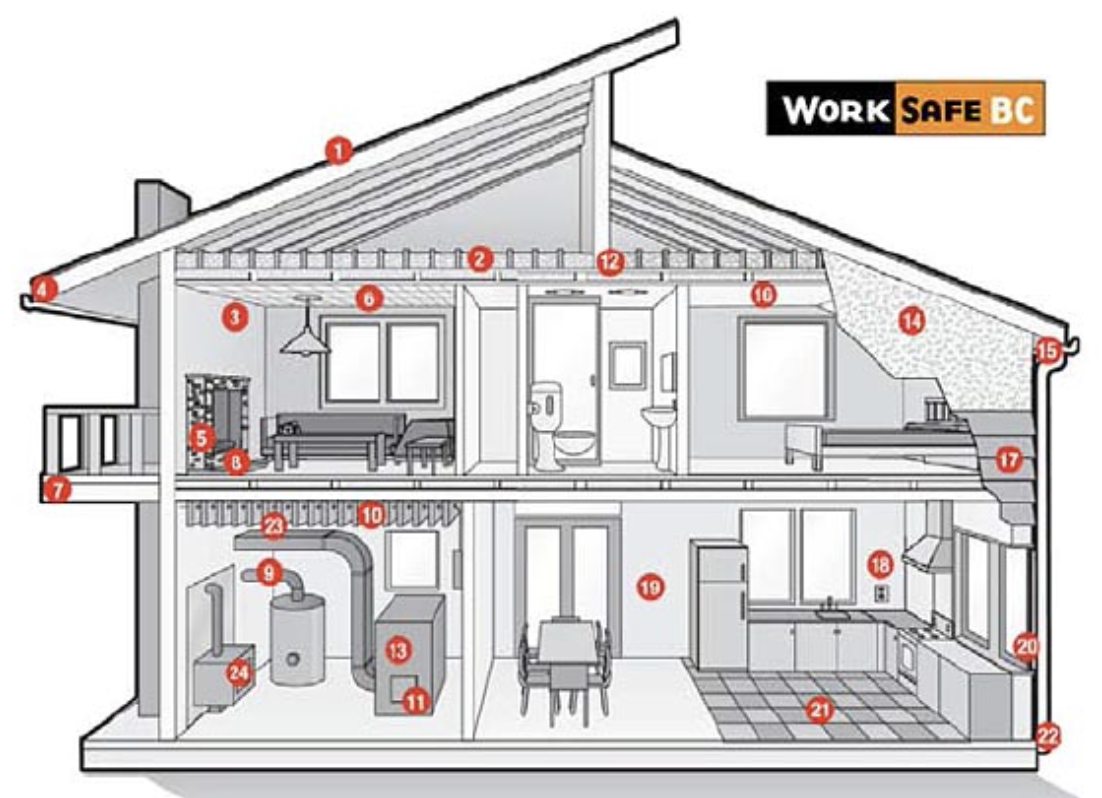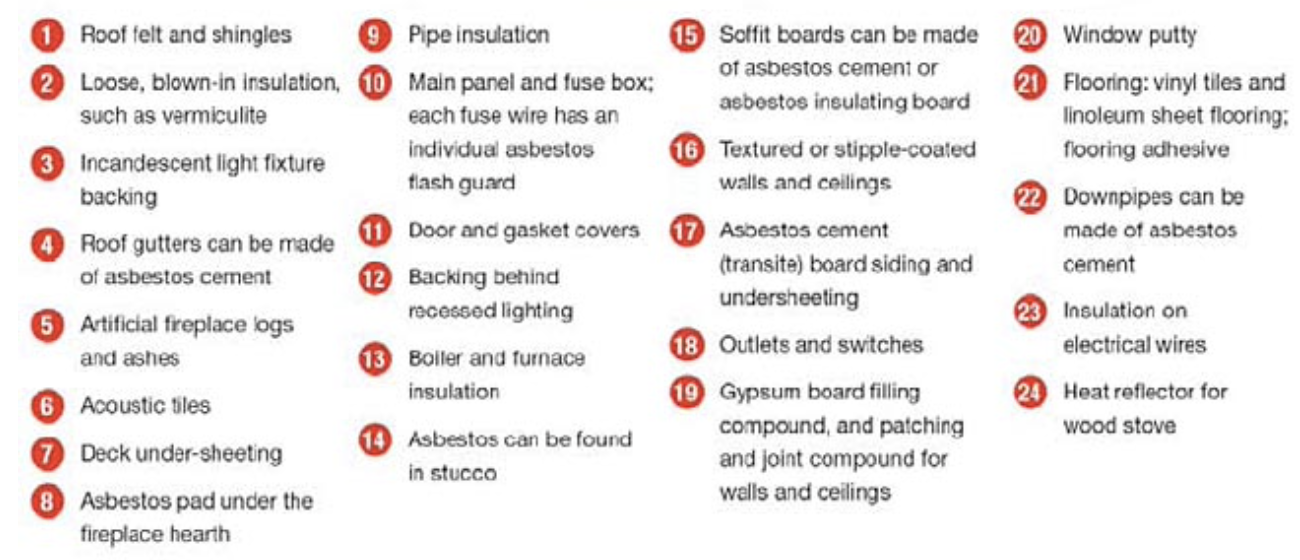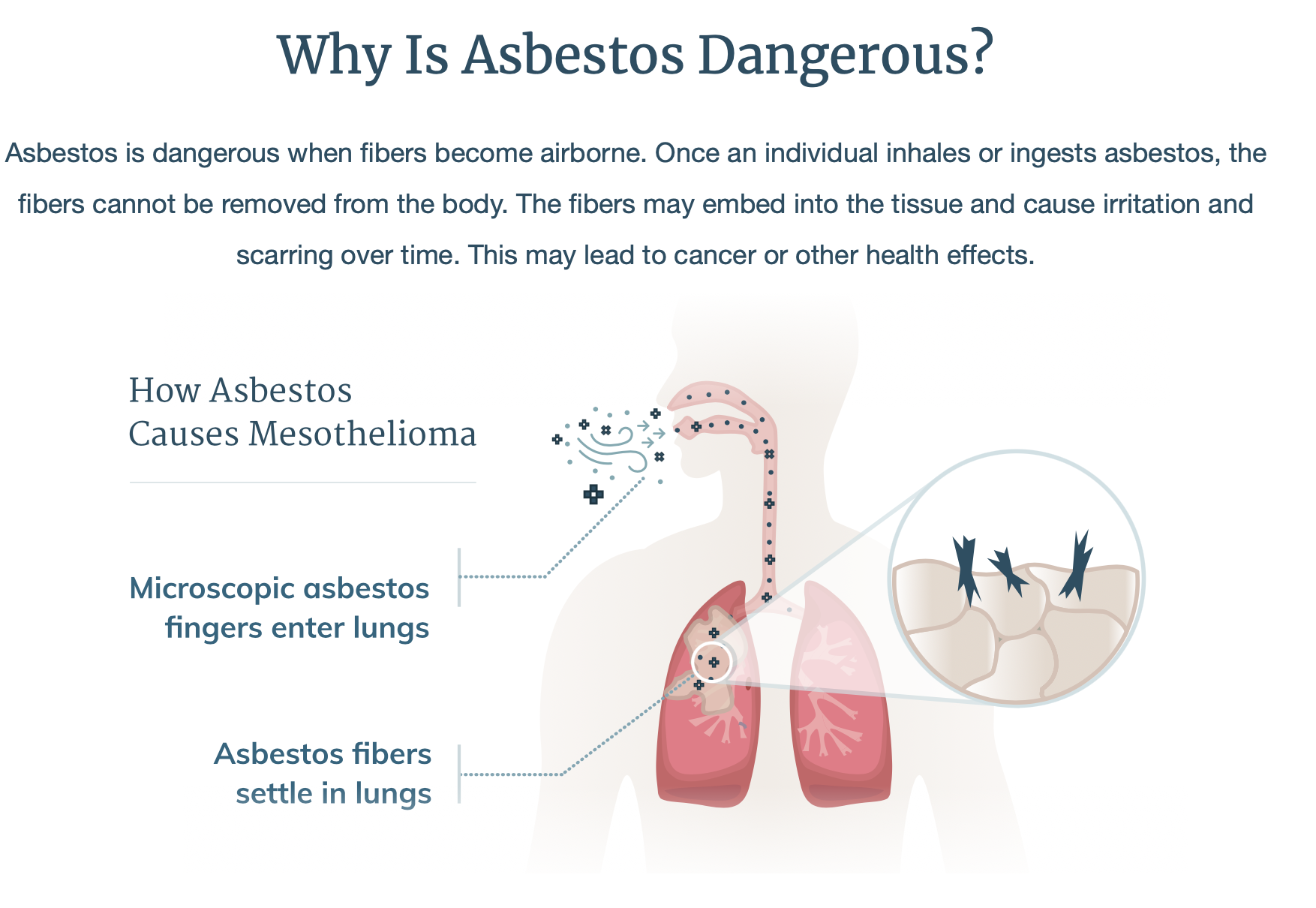


Materials for Learning
Asbestos was used in adhesives, bonding and sealers from the 1880s through the 1980s. Products such as mastic, putty, caulk and construction tape were all often made with asbestos. The mineral added durability and heat resistance. Because asbestos was a popular additive to these products, past uses remain in thousands of older homes and buildings today.
Asbestos was used in several types of tiling, primarily for floors and ceilings. The mineral provided durability, strength and heat resistance. Asbestos floor tiles contained asbestos from the 1920s to the 1970s. Asbestos ceiling tiles contained asbestos fibers from the 1950s to the 1980s. However, production dates may vary based upon the manufacturer. Some homes may still contain old asbestos tiles, posing a risk to homeowners.
Ductwork Connectors - Heating, ventilation and air conditioning (HVAC) systems use ductwork to deliver and remove air within a space. From the 1930s to the 1980s, many HVAC components contained asbestos. Asbestos was used in ductwork connectors, tapes, sealants and other components to provide durability and temperature insulation. Asbestos is no longer used in most of these parts today, but it may still be present in older HVAC systems.
Asbestos gaskets were used in several industries, including construction, boilermaking, shipbuilding and manufacturing. These gaskets were used to create a tight seal between pipes, valves and other parts. Asbestos fibers were incorporated into gaskets for durability against heat and chemicals. Asbestos-containing gaskets were manufactured until the 1980s, but some may still be present in older vehicles and machinery.
Insulation - Asbestos was used for a variety of insulating materials. Loose-fill insulation in walls, spray-on insulation and block insulation contained asbestos. Although there are regulations in place to limit the use of asbestos, the mineral can still be used in insulation today as long as it does not exceed 1%. Homes, schools and other buildings may also have older asbestos insulation, which may contain higher amounts of asbestos.
Popcorn Ceiling - Popcorn ceilings and other spray-on ceiling coverings contained asbestos. The mineral provided durability, heat resistance and fire resistance. These asbestos-containing products were commonly used from 1945 to the early 1990s. Construction workers and homeowners may be in danger of asbestos exposure as these products age or degrade. Disturbing asbestos popcorn ceilings can also lead to exposure. For example, renovation and removal may release asbestos fibers.
Vinyl - Asbestos was used in vinyl products to enhance their durability and heat resistance. The mineral was most often used in vinyl products such as floor tiles, sheet flooring and wallpaper. Asbestos was also frequently added to the adhesives and backings of these products. As a result, removing vinyl products can release asbestos fibers. Asbestos is no longer used in today’s vinyl products. However, it may still be present in older homes and buildings.
Fireproofing - Because asbestos is a known fire retardant, it was popular for various fireproofing and fire-resistant products. Asbestos-containing fireproof products include asbestos cloth, fire blocks and fire safety gear. These materials put firefighters, construction workers and numerous other industries at risk of exposure. Some of these asbestos-containing fireproofing products are still actively produced today.
